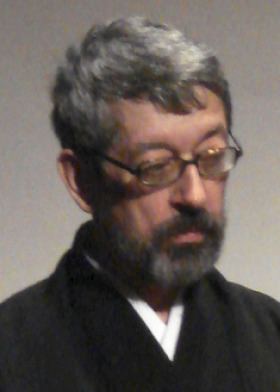Nationality Czech Name Vaclav Chvatal | ||
 | ||
Alma mater University of WaterlooCharles University Doctoral students David AvisRyan HaywardBruce Reed | ||
Václav (Vašek) Chvátal ( [ˈvaːtslaf ˈxvaːtal] is a Professor Emeritus in the Department of Computer Science and Software Engineering at Concordia University in Montreal, Canada. He has published extensively on topics in graph theory, combinatorics, and combinatorial optimization.
Contents
Biography
Chvátal was born in Prague in 1946 and educated in mathematics at Charles University in Prague, where he studied under the supervision of Zdeněk Hedrlín. He fled Czechoslovakia in 1968, three days after the Soviet invasion, and completed his Ph.D. in Mathematics at the University of Waterloo, under the supervision of Crispin St. J. A. Nash-Williams, in the fall of 1970. Subsequently he took positions at McGill University (1971 and 1978-1986), Stanford University (1972 and 1974-1977), the Université de Montréal (1972-1974 and 1977-1978), and Rutgers University (1986-2004) before returning to Montreal for the Canada Research Chair in Combinatorial Optimization at Concordia (2004-2011) and the Canada Research Chair in Discrete Mathematics (2011-2014) till his retirement.
Research
Chvátal first learned of graph theory in 1964, on finding a book by Claude Berge in a Pilsen bookstore and much of his research involves graph theory:
Some of Chvátal's work concerns families of sets, or equivalently hypergraphs, a subject already occurring in his Ph.D. thesis, where he also studied Ramsey theory.
Chvátal first became interested in linear programming through the influence of Jack Edmonds while Chvátal was a student at Waterloo. He quickly recognized the importance of cutting planes for attacking combinatorial optimization problems such as computing maximum independent sets and, in particular, introduced the notion of a cutting-plane proof. At Stanford in the 1970s, he began writing his popular textbook, Linear Programming, which was published in 1983.

Cutting planes lie at the heart of the branch and cut method used by efficient solvers for the traveling salesman problem. Between 1988 and 2005, the team of David L. Applegate, Robert E. Bixby, Vašek Chvátal, and William J. Cook developed one such solver, Concorde. The team was awarded The Beale-Orchard-Hays Prize for Excellence in Computational Mathematical Programming in 2000 for their ten-page paper enumerating some of Concorde's refinements of the branch and cut method that led to the solution of a 13,509-city instance and it was awarded the Frederick W. Lanchester Prize in 2007 for their book, The Traveling Salesman Problem: A Computational Study.
Chvátal is also known for proving the art gallery theorem, for researching a self-describing digital sequence, for his work with David Sankoff on the Chvátal–Sankoff constants controlling the behavior of the longest common subsequence problem on random inputs, and for his work with Endre Szemerédi on hard instances for resolution theorem proving.
